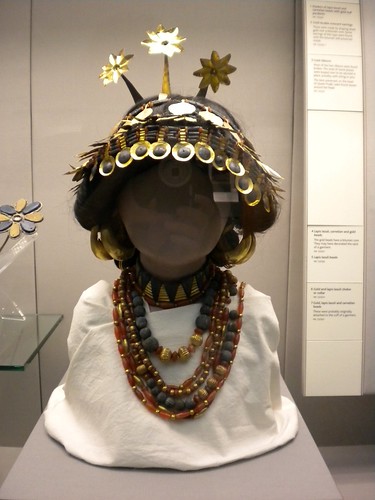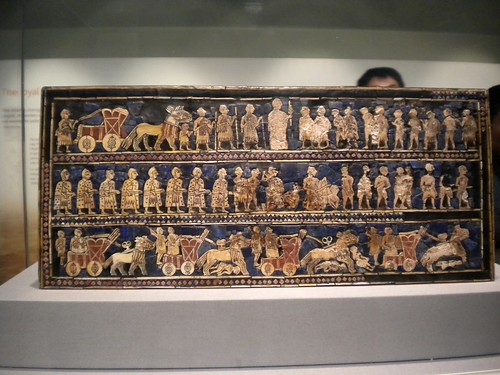The Roman Republic was the subject of an In Our Time episode all the way back in 2004 – we listened to it last August while there weren’t any new In Our Times airing. It’s a pretty broad subject for a 45 minute programme – 500 years of history plus its rise and fall – so of necessity it was painting with fairly broad brushstrokes and looking at themes and commonalities across the centuries. Tackling it were Greg Woolf (St Andrews University), Catherine Steel (University of Glasgow) and Tom Holland (historian and author). (NB: Institutions presumably out of date, it being 12 years ago.)
They started by talking about the foundational myths of the Republic as the stories they told themselves shaped how the Republic functioned. This isn’t Romulus and Remus – they are a foundational myth for the city – instead the two key stories are the rape of Lucretia and Horatius on the bridge. Lucretia was raped by the son of the King of Rome, and afterwards she committed suicide whilst calling on her kin to avenge her. This sparked an uprising (led by a man called Brutus) which drove out King Tarquin. Following this the Romans declared they would have no more kings. The second legend follows on directly from this one* – Tarquin didn’t take kindly to losing his kingdom like this, and enlisted the support of one of the nearby Etruscan cities. He returned to Rome at the head of an army and it seemed like the Romans were going to be forced to take their king back. However before this could happen Horatius stepped forward to stand on the bridge the army were marching over. He and two companions held off the army for long enough for the bridge to be destroyed behind them, preventing the army from reaching the city. So you have this ideal that the people will rule themselves (with no kings) and when a hero is needed a citizen will step forward to give his own life for his city.
The Roman Republic was the first constitutional democracy meaning that people were voted into positions of responsibility. (Athens was a direct democracy, where everyone voted on what should be done.) The political structure was based on sharing power around in two different ways. Firstly the many powers that a king had once had were distributed between several people. Secondly any given person only held a particular office for a short term (rather than for life). The ephemerality of power and glory were a key concept for the Republic. A consul was consul for a year. A general who’d won a victory was given a triumph and treated like a god for a day. Theatres and celebratory buildings (like triumphal arches) were temporary structures. Even the permanent infrastructure buildings weren’t built of stone but of more ephemeral materials. Which puts the Emperor Augustus “coming to Rome a city of brick and leaving it a city of marble” (as discussed on the In Our Time about the Augustan Age (post)) in a different light: that’s not just an upgrade to the buildings, that’s a change of ethos.
Clearly the Republic wasn’t static over its 500 years of history – in particular the balance of power between the people and the aristocracy was constantly shifting and evolving. But it was at heart a very conservative society which looked back to a prior Golden Age. Much was written in later days in the Republic about how it had been better in the early days (before whatever the most recent crisis had been) – and this genre includes most of the surviving texts written about how the Republic was founded. Changes were often brought in by announcing that they were returns to the ways things were done in the past – whether or not this was actually true. This continues after the Republic as well – they brought up on the programme that Augustus’s propaganda cast the beginning of the Empire as a restoration of the good old days of the Republic.
The end of the Republic can be thought of as it becoming a victim of its own success. Before they went out and conquered such vast lands it was possible for every key political figure to come back every year to Rome and vote for the new Consuls and so on. And when your campaigns only last a year and are nearby then the army can be based on the idea of farmer-soldier citizens. Every able-bodied land-owning male citizen was supposed to enlist – easily done when he comes back in time for harvest, but what do you do about his farm if he’s on campaign for 5 years at a time? And once the land-owning requirement was abolished where do long term soldiers retire to when they’re done in the army? The Senate generally prevaricated over the provision of awards and recompense to these retired soldiers – which left a gap for the generals of the armies to fill. And if your reward would come from the charismatic general you were serving under, then your loyalty would be to him first rather than to Rome or to the Senate.
The Triumvirate of Pompey, Crassus and Caesar (the first stage in the transition from Republic to Empire) can be seen as having grown out of Pompey not liking his downgrade in status when he returned to Rome. Whilst out campaigning in the East he had been treated like a king, back home in Rome he was only one amongst equals. And not a particularly important one at that – having been away he was out of the loop, politically speaking. The experts said that Caesar’s motivation was probably that he saw there as being only so many “slots” for important people in any new regime and he wanted to make sure he occupied one of them.
The defining point for the end of the Republic was the crossing of the Rubicon by Caesar and his army. The Rubicon is a river between Italy and Gaul, and it marked the boundary between the provinces (where a general could be a king in all but name) and the core territories (where the general was no more important than any other aristocrat). The tradition was that you could not bring your army with you into the core – and so Caesar camps on the other side, which makes the Senate nervous. He’s given the choice between dismissing his army and crossing himself, or taking his army and leaving. But Caesar knows that if he does this then he loses all the power he’s worked for – and so he brings his army across the Rubicon.
I said that was the defining point of the end, but as they discussed on the programme that’s only obvious with hindsight. It probably wasn’t clear to the Romans that the Republic was gone forever until one Emperor inherited from another … and perhaps not even until an Emperor was deposed and yet still the Republic was not not restored.

